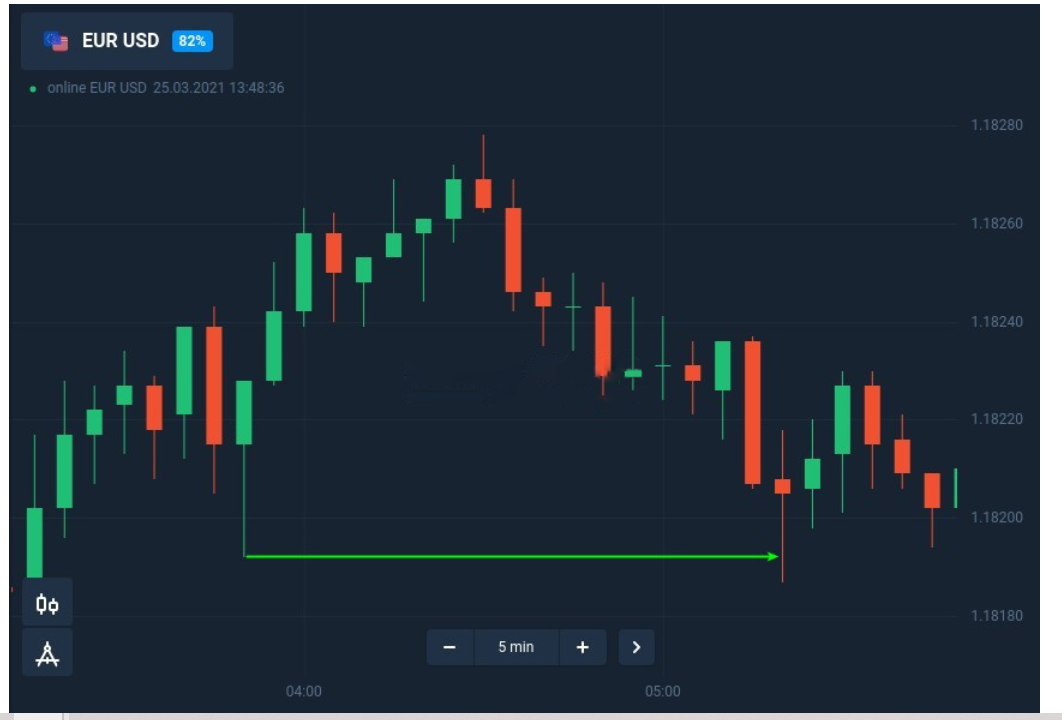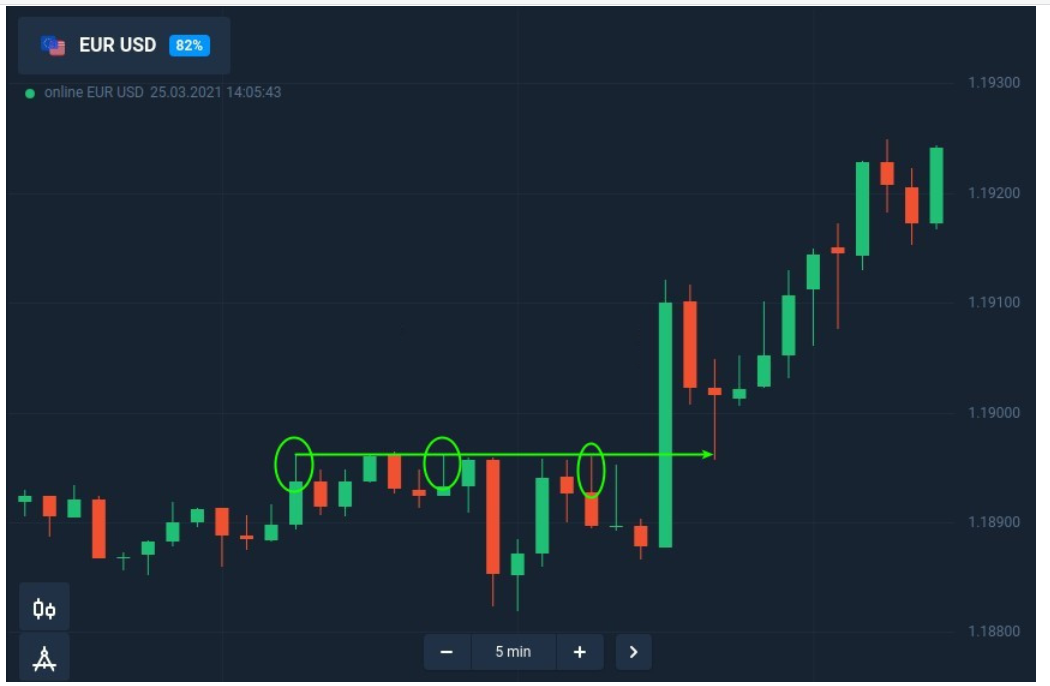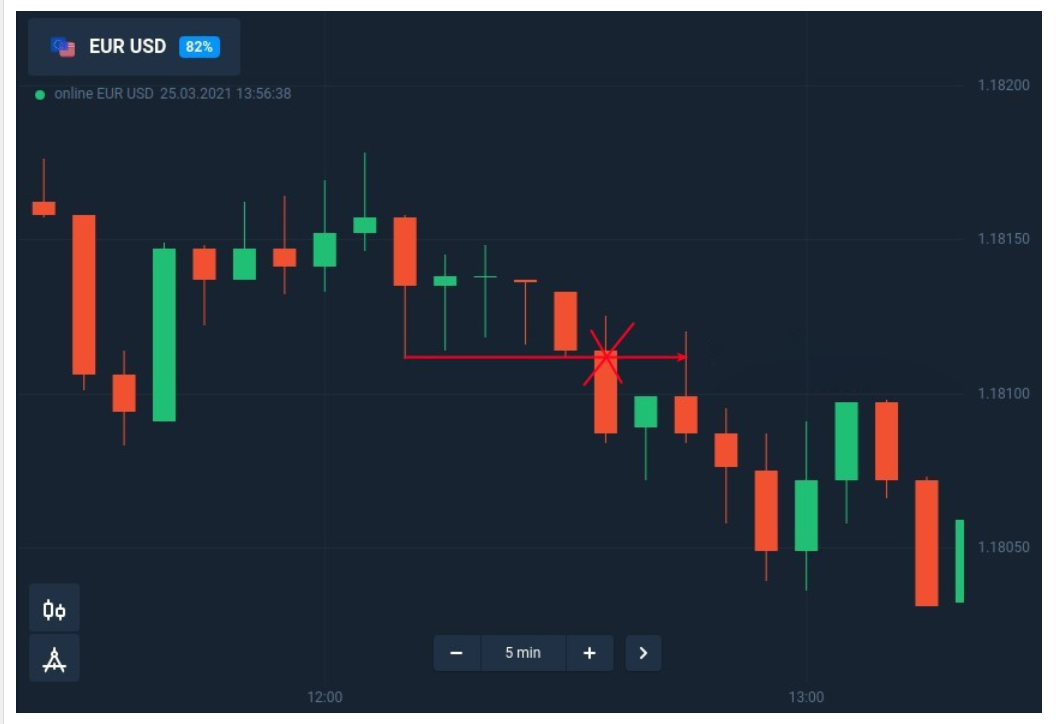The Quotex platform offers a few different sorts of charts. The Japanese candlestick chart is the most well-liked one. It really is excellent. A substantial percentage of the data that aids in trading decisions is carried by the Japanese candles. Shadows and a body make up a candle. And this serves as the foundation for the method used today at Quotex to trade fixed-time trades. Let’s start now.
Japanese candlesticks description
A succession of candles in various sizes and colors are displayed on the Japanese candlesticks chart. Red candles are bearish, and green candles are bullish. Some are large, some are diminutive. Some have no shadows, while others have extended ones on one or both sides. Why does that matter?
A candle with two wicks alerts investors to the price’s complex and challenging trajectory. A long wick indicates a strong price rejection in the direction of the shadow.
In two circumstances, a Japanese candlestick with a shadow generates a trading indication. when the price creates a trend, breaks out of the support/resistance level, and tests the level once more. When the price travels sideways and encounters these levels.
Trading with the shadows of the candles on the Quotex platform
You need to have selected a financial instrument and be logged into your Quotex account. Set the chart’s Japanese candlestick style and candle period to five minutes. At most, invest 1%–5% of your total capital. Your trades should last for the same amount of time as the candle period.
When the price reaches the critical levels, you initiate a trade. There are two circumstances in which you can use the shadows of the candles to enter the trade, as I’ve already indicated. Pending orders are usable on the levels shown by shadows. Let’s talk about it using some examples.
Case number one – the price moves sideways
When the price oscillates, draw the support or resistance line. They will make up the strong price reversal zones, which are indicated by the development of the shadows.
The euro-dollar chart with the extra support level may be found below. The candle cast a long descending shadow that touched it. You receive a signal from it to start a buy position.

The opposite condition is depicted in the following graph. On the resistance level, a candle with a protracted upward shadow can be seen. Here, start a short trade.
Since you are utilizing a 5-minute chart, the duration of each trade should be 5 minutes.

Case number 2 – a breakout of the meaningful zones
You watch for the support or resistance levels to break. Most likely, a new trend is developing. The candle that appears after the breakout should be the focus of your attention.
There is a drawn resistance line on the chart below. It then breaks out into a bullish candle with the upper shade. When the price retests the resistance level, enter the position.

When the price reaches the downward candlestick shadow from the previous candle that is closest to the breakout point, you should start a short trade.

Summary
The employment of candlestick shadows in trading fixed-time transactions is a very secure and reliable method. Initially, the Japanese candlestick chart has a large number of candles with wicks. This presents you with numerous chances to engage in profitable trades. Second, using the breakout of the significant zones has a pretty high victory rate in this scenario. This is due to the fact that this is a common price retest behavior. Lastly, a sound money management strategy can help you achieve your goals. As I previously stated, only invest 1% to 5% of your cash in a single trade, and hold the position open for one candle.
As you can see, this tactic is not only simple to implement but also successful. Click here to access the Quotex demo account and see for yourself. Practice for as long as you need to, then switch to the real account. What do you think of the 5-minute candlestick shadow approach for Quotex fixed-time trades? Let us know in the comments below.
FAQS:
Q: What are candle shadows in trading?
A: Candle shadows, also known as wicks or tails, are the thin lines that appear above and below the body of a candle on a price chart. They represent the highest and lowest prices that an asset or security reached during a particular time period.
Q: How can I trade candle shadows with fixed time trades on Quotex?
A: By analyzing candle shadows on a Quotex chart, you can potentially identify key price levels and market trends. For example, long lower shadows on bullish candles can indicate buying pressure, while long upper shadows on bearish candles can indicate selling pressure. You can use this information to make informed trading decisions when using fixed time trades on Quotex.
Q: How do I identify candle shadows on Quotex?
A: To identify candle shadows on Quotex, look for the thin lines that extend above and below the body of each candle on the price chart. These lines represent the highest and lowest prices that the asset or security reached during the particular time period.
Q: Are candle shadows reliable indicators?
A: Candle shadows can be useful indicators, but they are not always reliable. It’s important to combine candle shadow analysis with other technical analysis tools and market indicators to get a more complete picture of the market.
Q: Can I trade candle shadows with fixed time trades for any asset or security on Quotex?
A: Yes, candle shadows can be used to trade any asset or security on Quotex, including forex, stocks, and cryptocurrencies. However, it’s important to keep in mind that different assets may have different candle shadow dynamics, so it’s important to adapt your analysis accordingly.







